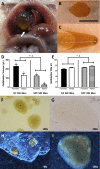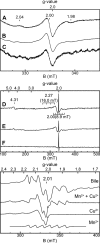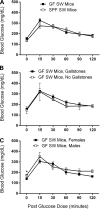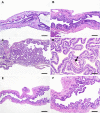Impaired cholecystokinin-induced gallbladder emptying incriminated in spontaneous "black" pigment gallstone formation in germfree Swiss Webster mice
- PMID: 25477375
- PMCID: PMC4329474
- DOI: 10.1152/ajpgi.00314.2014
Impaired cholecystokinin-induced gallbladder emptying incriminated in spontaneous "black" pigment gallstone formation in germfree Swiss Webster mice
Abstract
"Black" pigment gallstones form in sterile gallbladder bile in the presence of excess bilirubin conjugates ("hyperbilirubinbilia") from ineffective erythropoiesis, hemolysis, or induced enterohepatic cycling (EHC) of unconjugated bilirubin. Impaired gallbladder motility is a less well-studied risk factor. We evaluated the spontaneous occurrence of gallstones in adult germfree (GF) and conventionally housed specific pathogen-free (SPF) Swiss Webster (SW) mice. GF SW mice were more likely to have gallstones than SPF SW mice, with 75% and 23% prevalence, respectively. In GF SW mice, gallstones were observed predominately in heavier, older females. Gallbladders of GF SW mice were markedly enlarged, contained sterile black gallstones composed of calcium bilirubinate and <1% cholesterol, and had low-grade inflammation, edema, and epithelial hyperplasia. Hemograms were normal, but serum cholesterol was elevated in GF compared with SPF SW mice, and serum glucose levels were positively related to increasing age. Aged GF and SPF SW mice had deficits in gallbladder smooth muscle activity. In response to cholecystokinin (CCK), gallbladders of fasted GF SW mice showed impaired emptying (females: 29%; males: 1% emptying), whereas SPF SW females and males emptied 89% and 53% of volume, respectively. Bilirubin secretion rates of GF SW mice were not greater than SPF SW mice, repudiating an induced EHC. Gallstones likely developed in GF SW mice because of gallbladder hypomotility, enabled by features of GF physiology, including decreased intestinal CCK concentration and delayed intestinal transit, as well as an apparent genetic predisposition of the SW stock. GF SW mice may provide a valuable model to study gallbladder stasis as a cause of black pigment gallstones.
Keywords: black pigment gallstones; cholecystokinin; germfree mice; impaired gallbladder motility.
Copyright © 2015 the American Physiological Society.
Figures







References
-
- Alam C, Bittoun E, Bhagwat D, Valkonen S, Saari A, Jaakkola U, Eerola E, Huovinen P, Hanninen A. Effects of a germ-free environment on gut immune regulation and diabetes progression in non-obese diabetic (NOD) mice. Diabetologia 54: 1398–1406, 2011. - PubMed
-
- Balemba OB, Heppner TJ, Bonev AD, Nelson MT, Mawe GM. Calcium waves in intact guinea pig gallbladder smooth muscle cells. Am J Physiol Gastrointest Liver Physiol 291: G717–G727, 2006. - PubMed
-
- Balemba OB, Salter MJ, Heppner TJ, Bonev AD, Nelson MT, Mawe GM. Spontaneous electrical rhythmicity and the role of the sarcoplasmic reticulum in the excitability of guinea pig gallbladder smooth muscle cells. Am J Physiol Gastrointest Liver Physiol 290: G655–G664, 2006. - PubMed
-
- Cahalane MJ, Neubrand MW, Carey MC. Physical-chemical pathogenesis of pigment gallstones. Semin Liver Dis 8: 317–328, 1988. - PubMed
-
- Chen CY, Lu CL, Huang YS, Tam TN, Chao Y, Chang FY, Lee SD. Age is one of the risk factors in developing gallstone disease in Taiwan. Age Ageing 27: 437–441, 1998. - PubMed
Publication types
MeSH terms
Substances
Grants and funding
LinkOut - more resources
Full Text Sources
Other Literature Sources

